Elmwood School THE OUR KIDS REVIEW
The 50-page review of Elmwood School, published as a book (in print and online), is part of our series of in-depth accounts of Canada's leading private schools. Insights were garnered by Our Kids editor visiting the school and interviewing students, parents, faculty and administrators.
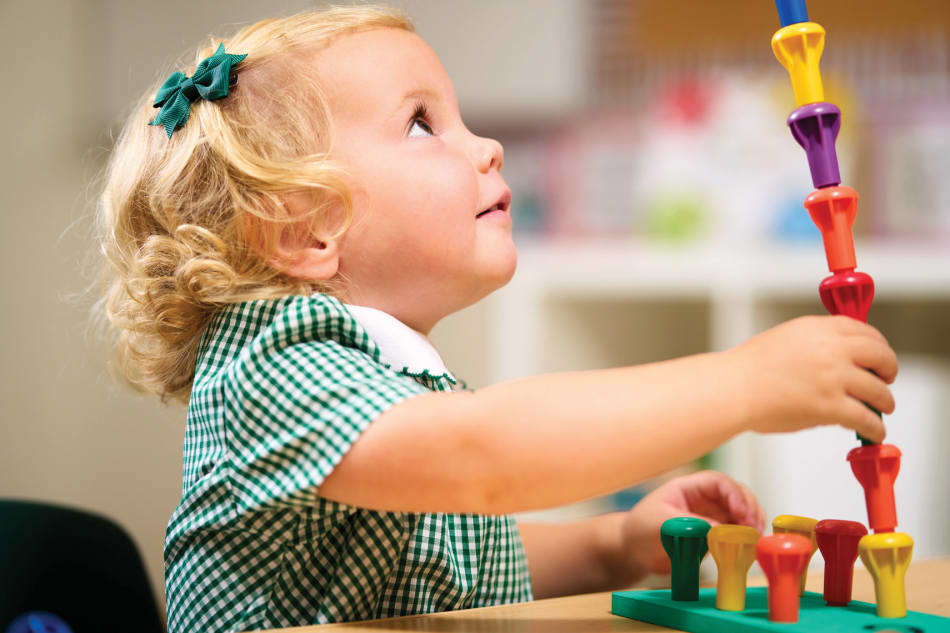
Introduction
In the century since it was founded, Elmwood has distinguished itself by offering a progressive approach to learning that is consistently attentive to the evolving best practices in education. At times in its history, it has been at the very forefront in that regard—most pointedly in 1978, when it became the first school in Canada to offer the International Baccalaureate (IB) Diploma Programme. When the Primary Years Programme (PYP) and Middle Years Programme (MYP) were added, it became the first girls’ school in North America to offer the entire continuum. Even today, Elmwood remains the only full-continuum IB World School in Ottawa and one of only 20 in the country.
In 2019, the school took another leadership position in the education of girls when it inaugurated the Future Leaders Conference, an annual gathering of students and teachers from throughout the city. That year, 20 public and private schools participated, signalling the appetite for this kind of event, and establishing the Future Leaders Conference as a model for similar initiatives throughout Canada. “This conference has touched almost everyone in this school in some way, giving them more experience leading a team or being part of a team, contributing ideas,” said a student at the time.
In those things and more, the school presents some interesting dichotomies, balancing tradition and innovation in productive, compelling ways. In the day-to-day, there is pride placed in the culture and community, and the uniqueness of the offering is part of that. “There is a sense that this is their home base,” says English instructional lead Teresa Marquis. “Even when they leave, they don’t feel like, ‘okay, I’ve left that behind, thank God.’ It’s more a sense that the school is a part of who they are.”
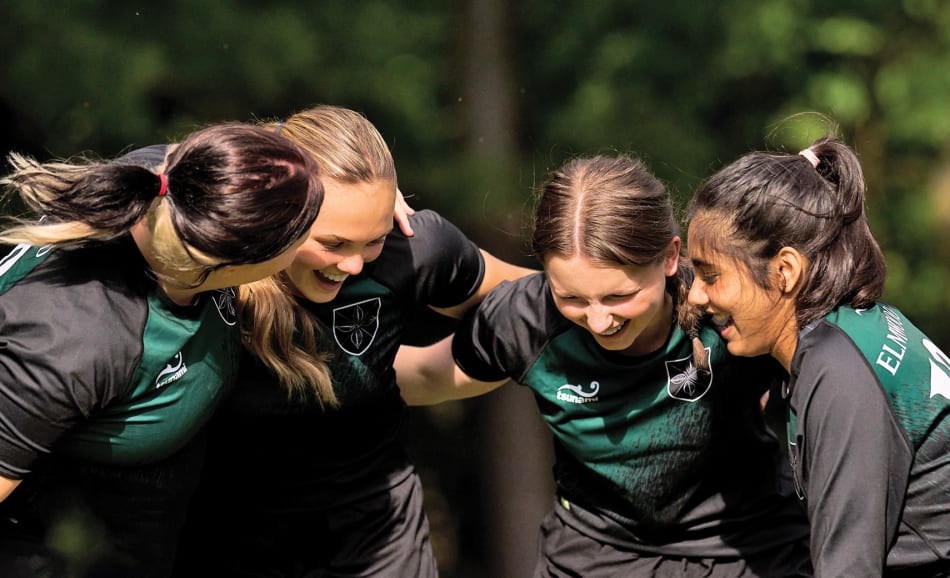

Key words for Elmwood School: Passion. Engagement. Community.
Basics
Elmwood is an independent girls’ school located in Ottawa, Ontario. Founded in 1915, it offers a liberal arts education and includes a Junior School (pre-kindergarten through Grade 5) and Middle and Senior Schools (Grades 6 through 12). The Middle and Senior School programs are housed in the main building, while the pre-kindergarten through Grade 5 programs are housed in a second building. For the moderately energetic, Elmwood is walking distance from the official government residences (or, for the more aggressively energetic, from ByWard Market and Parliament Hill). Embassies dot the neighbourhood.
The campus is modest in size with good use made of the available space. Given the trees on the properties that abut the schoolyard, the campus feels larger and further from the city than it actually is. The site also includes a headmaster’s residence that is no longer used for that purpose, but instead is becoming instructional space. The original Keefer farmhouse was torn down and the new main building was built in 1925. The spaces within it all feel newer still, for the most part, thanks to significant capital development and investment through the years. Histories of the school mention the barn, which is still on site, though it has now been subsumed on all sides by the various additions and renovations.
The traditions of Elmwood are many, and they derive principally from the UK public school model. There are prefects, houses, and uniforms. There’s a school hymn that’s sung at a school-wide assembly each Wednesday morning—John Bunyan’s “To Be a Pilgrim”—though the school has no chapel or religious affiliation. All the traditions are seen as serving the culture and the goals of the school while granting an overall sense that, as an institution, it is bigger than any one person or the current population of students. All feel that they are participating in something larger than themselves, something they vocally appreciate. “It’s all about narrative,” says Meagan Enticknap-Smith, deputy head of the Middle and Senior Schools. “It’s all about who we are as a community, and the traditions really help weave that together.”
The main offices and the library sit off a hallway that creaks and groans with history. In that hall is a ledger from the 1940s, open to pages where student reports were kept. The comments entered there humanize the history of the school in charming ways. “We are glad to see a decided improvement in Diana’s attitude this last few weeks,” reads an entry from May 1940. It’s hard not to read between the often pointed lines. “We hope that next year she will apply herself to the best of her ability.” Clearly, this has long been a place where the school’s students have gathered to stretch their wings—mischief apparently isn’t a recent invention—as well as their influence and achievement. Nearby is a cabinet stacked with trophies ringed with crests, tracing an unbroken line back to the 1930s. Many of them are still awarded each year, just as they have been for more than eight decades, including the house cup. The houses have grown from just three in the early years to four, each named after a prominent woman in history: Elizabeth Fry, Helen Keller, Florence Nightingale, and Cairine Wilson, Canada’s first female senator.
The older areas of the main building contrast impressively with the new teaching spaces. The administration hallway is Edwardian, while the science and innovation wing (completed in 2018) is the height of cutting-edge modern—the design is in keeping with some of the most collaborative, cross-curricular instructional spaces in the country.
From the street, Elmwood presents as pleasantly modest. The main building sits close to the road, and the whole property is visible and inviting to those happening by. When we arrived early one day—this was just a couple of weeks into the new academic year—the rugby team was running drills on the field. Inside, a student orchestra was rehearsing, the sound echoing breezily through the halls. The school wakes up each day in waves, rather than in a rush, and there’s a nice hum to the environment before and after the instructional day.
When Head of School James Whitehouse arrived that morning, he stowed his stuff and then took up a position just outside the main doors, greeting students and waving at the parents dropping them off. He reportedly does this every day—even in the snow—and it’s a point in his routine that he visibly relishes. “You fix the most problems in the first 20 minutes of the day standing out here,” he says. The students arrive in more of a trickle than a rush, which is lovely. Most arrive early and by car, either for a specific practice or activity or just to have time to have a gab and ease into things. In every way, it’s a great start to the day.
The school feels worldly and connected to the nation and the global community beyond, and it comes by that honestly. One common area is home to flags representing all the nations that current students have come from. What’s striking is that there are so many of them, particularly given that Elmwood doesn’t have a boarding program.
The members of the faculty bring a wealth of international experience and perspective. As an IB school, Elmwood attracts teachers who appreciate what the IB curriculum offers, and many of them bring experience from teaching in IB settings around the world. Whitehouse has taught in Australia and the UK. Teresa Marquis, instructional leader of English, arrived at Elmwood from teaching at the British School, an international school in New Delhi, India, and has also taught in Switzerland. The list continues from there, including Ariane Leclair-Roberts, teacher in Elmwood’s Early Years programme (Malawi, Republic of Congo, and Turkey); Nathan Harris, instructional leader of science (UK); Matt Perreault, director of IT (Italy); and Meagan Enticknap-Smith, deputy head of the Middle and Senior School (Vietnam).
Still, “it’s also about a mindset,” says Enticknap-Smith. “I don’t think that you have to have lived or taught internationally to have that mindset. I think that we have cultivated it,” principally through recruitment. “We’re looking for someone who is very open-minded, who is respectful of different perspectives, who is curious about the world, who has good personal social skills, … [who is] interested in others, being curious, being creative, seeking out inclusion and diversity.” Given that it’s had the IB longer than any other school in the country, Elmwood has also been attracting and recruiting IB instructors—and developing that internationally minded culture—longer than any other. For that reason alone, if Elmwood isn’t the envy of other schools, it certainly should be.
In our experience, the members of the faculty and staff are all either young or young at heart. They are spirited and active. We saw a few venturing out for a jog at lunchtime. Frances Marchand, who initially came to the school as nurse/counsellor but is now director of health, safety, and wellness, is often one of them. “You have to,” she says, “because self-care is important!” Senior School students are also free to venture off campus for runs and walks in the neighbourhood, as long as they’ve signed out at the office.
In all of that and more, this isn’t the kind of independent school that sits atop a wooded hill behind iron gates. It’s not a hermitage but a launching pad, purposefully encouraging significant interaction with the neighbourhood, the city, the country, and the world beyond.
Leadership
The leadership team includes two deputy heads, the director of IT, the director of finance, the director of co-curricular learning, and the director of marketing and community relations. All report directly to the head of school and are accountable to the board of governors.
While relatively new to the headship, Whitehouse has been at Elmwood since 2012, serving as deputy head of the Middle and Senior School in what the International Coalition of Girls’ Schools described as “a profoundly influential tenure.” He came to Canada from the UK, having taught worldwide, including positions in Australia, England, and Hong Kong.
Whitehouse is the first male head of school, something made particularly apparent when staring at the portrait wall in the boardroom. Not only were the former heads all women—most of the earlier ones looking quite prim—but the space is literally filled. Whitehouse’s portrait will have to start another wall, perhaps, or it will otherwise cause a significant rearrangement of the portraits. In that, as in his role, he’s bucking a trend. When he was appointed, there were some questions raised, and understandably so. An alumna wrote a note of support to Whitehouse at the time, describing him as an unapologetic advocate for women. “Every single day I saw you, you showed me that you believed in me, and made me set my expectations much higher, and where they should be, for men to be female allies. You did that, and I am thrilled you will be able to be the role model you were for my classmates and I on an even bigger scale as headmaster.”
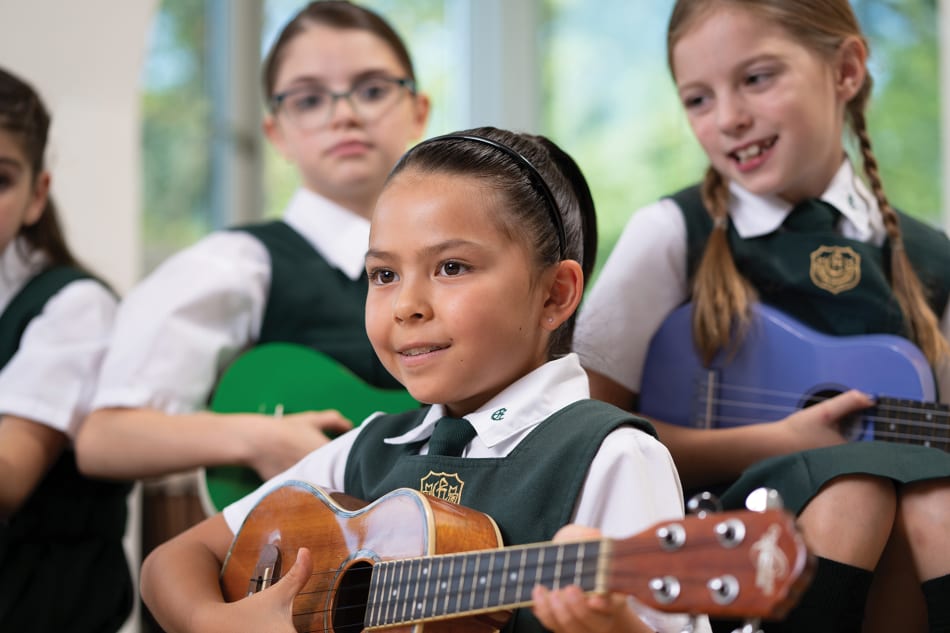
Background
Whitehouse describes Elmwood’s history as “absolutely fundamental” to the school as it exists today. “Elmwood is founded on the principle of the girls being ‘joyous, companionable, strong, and free,’” he says. It’s “the idea that you come to school to have a strong academic environment but also to understand the value of enjoyment and social connection. That’s all been there since day one.”
Historically, girls’ schools in Canada were established in a very different mould from boys’ institutions, and for a very different set of purposes. Where boys’ schools were about conformity, girls’ schools were progressive, quietly empowering students to do more and to demand more of society and of themselves. The women who taught at girls’ schools were modern and accomplished. They imparted the values of education, and, through their example, provided a window onto a world of possibility.
That’s absolutely the tradition that Elmwood participates within. Theodora Philpot founded the school with four students in 1915, precisely out of a desire to do things differently than they had been done before. She was born in Burma (now known as Myanmar), trained as a teacher in California, and founded a school in New York before moving to Ottawa. As such, she brought a sense of global awareness with her—something unique for the time—that would become a key aspect of the life of the school. Like Maria Montessori, Rudolf Steiner, and others who were innovating at the same time, Philpot felt that traditional education wasn’t meeting the needs of students academically, socially, or personally. She wanted to offer an alternative, one that was student-centric and that would stimulate a love of learning rather than enforcing the rote memorization of facts. She also felt that there should be a bit of poetry in the course of academic life and a bit of joy too. The school, in her formulation, would be a community in the way that John McKnight would later define that term: “the place where citizens prevail … the social space in which citizens in association do the work of problem solving, celebration, consolation, and creation.” While she may not have used the same terms, that’s nevertheless what Philpot was thinking. She intended that the school culture would emphasize and foster “an open, kind and generous influence in the School, forming year by year a growing band of ‘extroverts’, those people who love their fellows, and pull together, and share, avoiding the unpleasant little tricks that will creep unawares into any group of people, however choice.”
Despite the obvious differences from the earliest days of the school—it’s now home to almost 400 students—the spirit remains reflective of the initial vision of creating opportunities for students to explore their world together and to gain the confidence to assert their voices within it. “There is a sort of magic here,” says Whitehouse. “I walk in every day, and kids ask me how I am and what is going on in my life. They care about each other, and I love seeing connections form between people who are so different. It is like a family where people love the kids and the kids love them back.”
He’s clear that the all-girls environment isn’t about avoiding boys—that it’s more about moving toward something, rather than moving away from something. Of the students, he says that “they come here and their hair is still soaking from the shower, they have no makeup on, and they’re running into class and they want to start to learn.” While there have been huge advances in the rights of women since Philpot’s time, traditional gender roles often remain unwittingly reinforced in academic and extracurricular settings. Still today, science and technology are more likely to be promoted to boys than to girls, while English and the arts are more likely to be promoted to girls than to boys. That Elmwood is adept at disrupting those roles, and the assumptions behind them, is one of the things that defines the program. Tellingly, half of the graduates enter post-secondary programs in math, science, and engineering—which is just as it should be. Families and students aren’t drawn to Elmwood to secure a future in the maths and sciences but rather to ensure that all paths are open and encouraged, and that ample space is given to explore them all without bias or preconception.
The Junior School
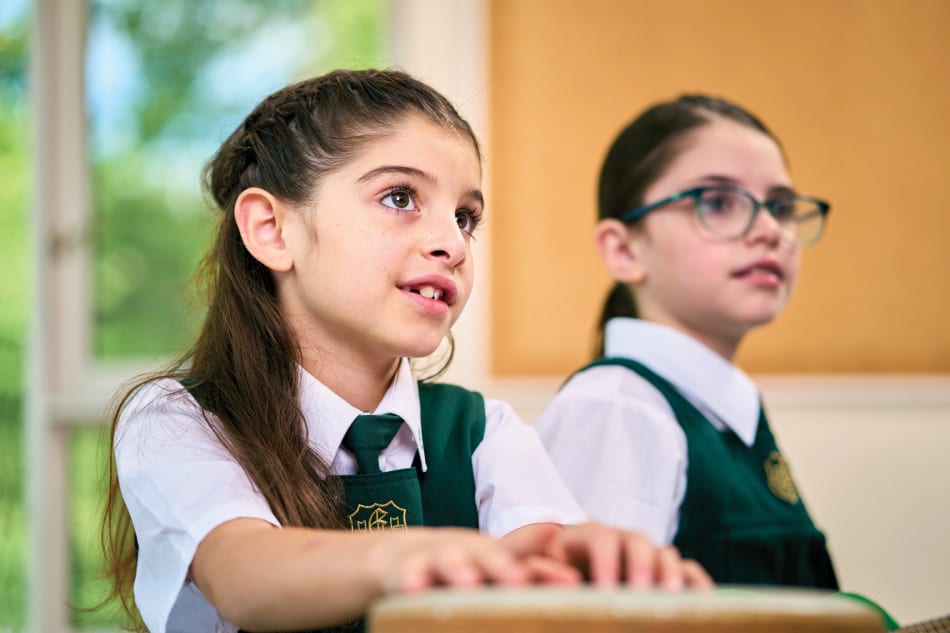
The Junior School building, completed in 2004, sits apart from the main building and houses the pre-kindergarten through Grade 5 programs. It was built intentionally with the IB Programme in mind, particularly as it pertains to interactive, co-operative learning. The three floors are formed around significant shared spaces, with the various classrooms leading off from them. The spaces throughout are, frankly, impeccable. Floors and walls are clear, clean, and bright. Overhead lighting is at a minimum, with classrooms lit largely by ambient natural light. One of the desks in the Kindergarten room had a bowl of apples in the centre—a tie-in to a learning unit—ringed with jars of crayons, all organized by colour. (Marchand admitted that she once went to the room at the end of the day just to see if it looks the same then as it does at the beginning. She found that it does.)
Where some early years environments are full of bustle—walls plastered with posters and art—the Elmwood approach draws more from the Reggio Emilia concept that less is more. Student work is apparent, and delightfully so, though displayed sympathetically in the spaces as not to overpower them. “We strive to create an environment that is the third teacher,” says teacher Kate Meadowcroft. “The spaces are a living and breathing portfolio around the learners. It’s [either] their work or it’s there as a visual cue to their learning. It all has meaning to them. The majority of it is produced by them.” Students can move easily through the instructional spaces, guided by their interests or the lessons at hand. Materials are thoughtfully chosen to spark interest without bombarding the senses.
The curriculum is clear and detailed, delivered through direct inquiry in ways that are either related to the students’ personal experience or based on close observation of how they’re responding to the teacher and the information presented. “We expect them to meet the expectations of the curriculum,” says Meadowcroft. “But we also want to honour their interests and to give them some ownership over their own learning. We know that that’s what is engaging for students; that’s what keeps them interested and curious and asking questions about the world around them.” Ultimately, she says, “it’s a way to be in life—not just in school, but a way to approach learning throughout their lives.”
A belief formalized in the IB curriculum is that the work of the classroom should be about the world outside the classroom and that instruction should prepare children for what they’ll find out there. In the early and primary years, that’s the natural environment. Windows in the classrooms look out onto the play spaces and the school garden, where they grow produce to learn about where food comes from and for use in the cafeteria. The windows are large, which also helps to bring the outdoors in. When we visited, the Kindergarten class was beginning a unit titled “Into the Woods: Forest Kindergarten.” They had been outside doing tree studies, during which they recorded observations about a specific tree—they had their picture taken with it, too—that they will visit at intervals throughout the entire year. Says Meadowcroft, “what I like about this unit is that the central idea is so broad that wherever their interest is, we can make space for it in the unit.” She feels it’s a good example of the approach of the school particularly and the IB more generally. A key aspect of the IB early years program is agency and ensuring that the students, within a set framework, have a say in what they’re learning. That’s clearly in evidence here.
If the Diploma is the pinnacle of the IB, the PYP and the MYP provide the groundwork for success there. “You can’t build without a great foundation,” says Meadowcroft. “And that’s what any good early years program does. So we start right from the beginning, using the language of the IB and the learner profile.” She adds that the IB has been very proactive in looking at early childhood education and the importance of developing social and motor skills through play-based learning: picking up a pencil is the gateway to writing a sentence; sharing a block is the gateway to collaboration; dramatic play is the gateway to developing narratives of their own. “They are important foundational skills—so in Senior Kindergarten, we are playing, but then [we] are balancing that with more traditional academics.”
And it continues very much in that vein. Students stay in the Junior School setting through Grade 5. The students in the Junior School are apart from the main building, though only in a physical sense. The older students come into the Junior School from time to time, casually (to use the physical education space there, for example) as well as more formally around mentorship and shared learning initiatives.
The curriculum grows with the students, though the approach and the context remain the same. They are involved in hands-on learning, guided by the PYP as well as the Ontario provincial curriculum. Instruction is delivered through six units of inquiry that address all the academic disciplines as well as the overarching concepts and skills shared between them. The approach is concept-driven, with students positioned as active learners, posing questions, forming hypotheses, and working together to find solutions and explanations. They are active in the physical sense as well, and one teacher noted that the longest a student might sit in one place is 20 minutes, if that—they are required to move about the learning spaces, something which heightens engagement. Those spaces are open, bright, porous, and shared. The opportunities for imaginative play are many, as are the interfaces between indoors and out. There is an exercise play space and outdoor classroom in front of the building, and from there, and throughout, active living and active learning rule the day. It’s lovely.
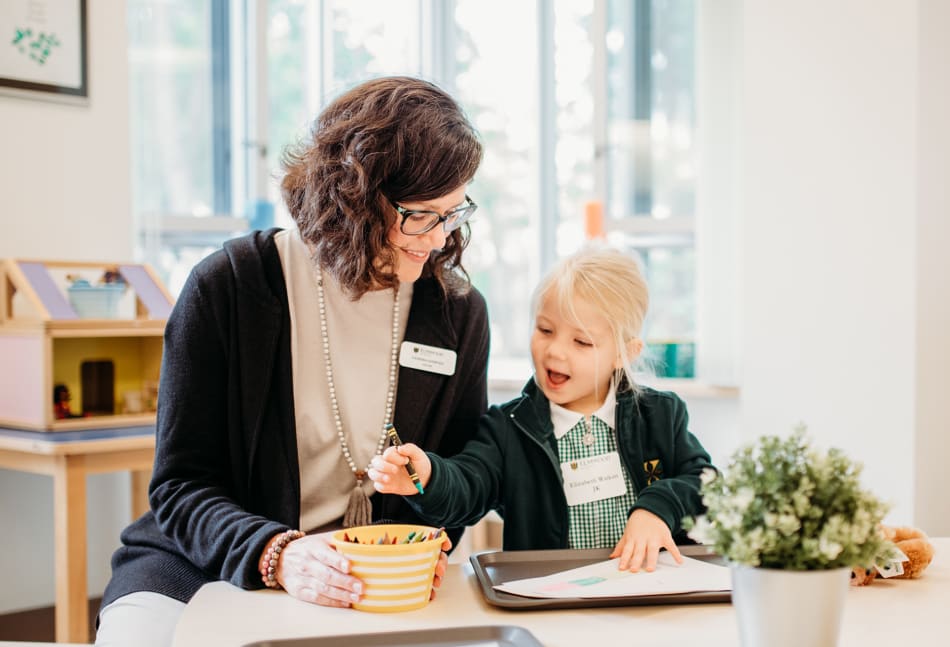
Academics
Elmwood was an early adopter of the IB, in part because it reflected so well the values and the approach that had been in place since the school was founded. Even in its earliest days, teachers brought international experience and perspective to their lessons. Today, a very significant portion of the instructors have taught in IB schools around the world, and they bring that life experience, as well as a belief in the strengths of the curriculum, into their classrooms.
Elmwood offers the IB layered with the Ontario curriculum. Both curricula are strong and contribute their strengths to the overall offering. Instruction is student-driven, and students are required to follow their interests while actively relating them back to the core academics, something made most obvious in the Grade 5 exhibition, the Grade 10 culminating project, and the Grade 12 Creativity, Action, Service (CAS) project. The goal is to ensure that, by the time students leave the school, they’ve had multiple opportunities to lead, to consider the kinds of roles that they’d like to move into, to gain substantive experience working with others, and to put their ideas into action, while gaining fluency with the core literacies.
The scope and sequencing of the curriculum—ensuring that students are ready and able, at any point, to effectively meet the challenges put to them—is proactive and detailed. A number of years ago, for example, faculty reviewed the sequencing of the English curriculum from Grades 6 through 12 to ensure that students are working on skills, knowledge, and concepts in a circular way. They looked at what was being covered in the English curricula, though they looked outside of it as well, to what was happening in other disciplines, finding connections and points of consilience. In Grade 10 English, The Marrow Thieves—a dystopian novel and winner of the Governor General’s Literary Award—is taught concurrently with a science unit on climate change. “Which is great,” says Marquis, “because it gets kids thinking about how we understand concepts not just through facts—such as you would get in a science book—but also through fiction and the imagination. Which, of course, is where a lot of science comes from: people thinking about possibilities.” Marquis is the instructional leader of English, or what might be termed a departmental head in other settings. She notes another example being the decision to teach Shakespeare’s Macbeth alongside Mary Shelley’s Frankenstein. “We’re going to collaborate a bit with science, around pushing the boundaries of the ethics within the science community. When is it taking it too far? That kind of thing.” Marquis feels that teaching contrapuntal texts—weighing two texts against each other—in consort with science units opens the concepts and the discussion, such as, in this case, those around ethical decision making.
Teachers from across the grade levels all think in similar ways, working together to ensure not only that everything that needs to be covered is being covered, but that those opportunities for cross-curricular instruction are capitalized upon. The cohesion and small size of the faculty, including that between the Junior, Middle, and Senior programs, works in their favour. Marquis notes that much of the planning happens in the hallway: “Someone might get an idea and say ‘listen, I’m doing this, so what do you think about X?’ … I think those organic meetings in the halls are where so many things really take off.”
The instructional approach is constructivist, with close attention given to real-world application. Lesson plans are adapted for the students’ individual strengths, deficits, and interests, to ensure that they become active participants in their learning. “It’s not delivery of curriculum,” says science teacher Nathan Harris. “It’s very much a hands-on discovery pattern. You develop a topic by [having] students do activities to discover a physical law, rather than learning a physical law and going away and attempting to prove it.” Students learn through doing and engaging actively with the concepts, “rather than just bombarding students with facts and theories and equations.” Students were bouncing balls in the physics lab one day when we toured, measuring the rebound height. “That’s got a lot of nice basic physics in it,” says Harris of the bouncing balls. “Physics labs are just full of toys,” and that’s the spirit that he teaches with. “You can write on these as well,” he says, motioning to the glass walls, then grabbing a wipe-off marker and doodling on them. “You come in in the morning and it’s covered in mathematics.” He’s an energized teacher who feels that science “has to be enjoyable. What’s not to enjoy about it? And you have to be enthusiastic; enthusiasm is contagious.” The spaces are constructed to allow and invite that kind of engagement.
Instructors across the subject areas are keen to find real-world applications that provide opportunities for students to dig deeper into the subject content, to look more deeply at the concepts at play, and to build research and information-processing skills. The classroom experience is one in which teachers are seen as facilitators of that, rather than as fonts of knowledge. To ensure consistency of approach, Whitehouse brought in a program of classroom observation, something that he admits harkens back to a time when teachers were indeed seen as fonts of content. They are observed a few times each year, though “the purpose is to make sure that we’re not falling into the old habits.” Observation, rather, is used to ensure that kids are engaged and learning. “Are they just writing down notes? Or are they having good debates? Are they probing? Are they extending the lesson? All those kinds of good things.”
“Open mindedness is really the goal,” says Harris. “As science teachers, of course you always hope that your students may go on and do science. Particularly for me—my specialty is physics—I’m always trying to encourage them to take physics and trying to redress the gender imbalance. But really, our job as teachers isn’t to start off with an empty mind and fill it. You start off with a mind and you open it. That’s really what you want to send them on to university with: to be critical thinkers and to be open minded, so that they can change their opinions when they are presented with new evidence. That’s a great life skill to have. And the IB lends itself very well to developing and having that sort of personality. We very much stress the concept of critical thinking.”
“ ... each student who comes to us is someone with hopes, with dreams, with talents, with strengths, with challenges, but who has a future ahead of them that we want to help them be ready to explore.”
Development of new program areas and enhancements is ongoing and aggressive. The faculty is currently pioneering the creation of an artificial intelligence (AI) curriculum, developed with the support of the National Research Council and the Canada Science and Technology Museum. It’s based in machine language and coding, though it includes an ethics component as well (such as hands-on experience within local hospitals and tech companies). The understanding is that those experiences will give students the skills and the attitudes that they’ll need in their professional lives. Initiatives in design thinking are similarly innovative in that they aren’t just based in a facility with technology, but also an ethical interaction with it.
In that and elsewhere, there’s a clear sense of looking forward, imagining where the school needs to be adapting and how best practices can be brought to serve adaptation. “We believe in the need to teach the core skills, because they’re not going anywhere,” says Whitehouse. “But at the same time, the students are going to need skills that are relevant to an ever-changing workplace that they’ll be going into. They include networking skills or design skills, but mainly it’s about thinking, the ability to think critically and not just being automatons that hear a problem and then solve it. It’s more about ‘Here’s a global issue. What questions can you ask? How can you think differently? What kinds of solutions might be brought to bear?’ We’re still going to be teaching math, we’re still going to be teaching English, but in a different way. There are some core values of teaching remaining, but then we’re going to teach AI and those kinds of things mixed in.”
The school recently embarked on a new strategic visioning plan, one that addresses precisely those kinds of solutions. To their credit, the faculty and administrators have put everything on the table, starting from asking what innovation really means and how it can be used to meaningfully and substantively improve the opportunities the school is able to offer. “For me, it’s all about opportunities that we give them,” says Whitehouse, “and how those opportunities can open up doors.”
That in itself isn’t entirely innovative—most schools of this calibre and focus are thinking in much the same way—though what distinguishes the Elmwood offering is its approach, available resources, and scope. They are in Ottawa, of course, and rightly make use of the unique resources of the National Capital Region. Mark Carney, UN special envoy for climate action and finance and former governor of both the Bank of Canada and the Bank of England, spoke to students at the Future Leaders Conference in 2022 about sustainability, specifically with regard to the management and reduction of climate risks. There is also a shorter path from Ottawa to international organizations—some students, for example, plan to work directly with a law firm in Dubai—that bring the core learning to life. “It will be actual real work,” says Whitehouse. “You know, when you’re in a law firm, what are you going to be doing? What are the problems you’re going to be helping to fix?” The students will see what a day is like, the activities it entails, and the kinds of environments—from close collaborations to international partnerships—that professionals need to be able to navigate.
“As a school, our mission is to help each student, to inspire each student, to reach their full potential,” says Enticknap-Smith. “On a personal level to me, that means that each student who comes to us is someone with hopes, with dreams, with talents, with strengths, with challenges, but who has a future ahead of them that we want to help them be ready to explore. And to be the best that they can be in whatever area they decide to pursue. It’s helping them find their personalized pathway so that when they leave, they’re going out into the world with a whole tool set and skill set and a very strong sense of self and confidence in what they want to be in the world. It’s not so much preparing each student to be the same thing—because they’re all going to go out with different goals, different hopes, different dreams—but it’s that when they leave here, they have the confidence, the voice, the agency to lead, to be strong, to pursue those dreams, whatever they might be.”
When asked, students say positive things about the teachers, which is to be expected perhaps. What’s telling, though, are the specific things that they point to—the kinds of interactions that they experience and appreciate. At Elmwood, thoughts first turn to personality and deportment. Says a student of Enticknap-Smith: “she’s super open to ideas, and she’s really inviting. She’s chill! And she can put a smile on your face if you’re having a down day.” Says another of the teachers: “if they see that we have great ideas, they give us opportunities to share those.” When asked what happens if someone has a bad idea, a student responds, “Well, what’s a bad idea? Like, there isn’t really a definition of a bad idea.” That she feels that way, and expresses it so readily, says a lot about the environment that she’s living and learning within. “[The teachers] want us to be the best person we can be. It doesn’t matter which field we’re going into; they just want us to succeed. And I think they want us to have the confidence to be able to do that without second guessing ourselves.”
One of the major benefits of all-girls education, says Harris, is a greater, more immediate sense of the academic opportunities available to students. “In coed schools that I’ve worked at, the number of girls taking physics and chemistry [is] low,” despite a responsibility for staff and faculty to make sure that doesn’t happen. “But here, every student who chooses physics is a girl. And they thrive in this environment, and we have a large uptake in physics, which is fantastic.” It is.

Academic environment
Some schools have more of a frantic energy, or equate that kind of energy with rigour. To its credit, Elmwood doesn’t. Students regularly stop to chat amiably with teachers in the hallways. They are interested in the faculty members’ lives, and that interest is reciprocated. There is a lovely community feel. At one point during our visit, some rowing sculls needed to be moved. Catching wind of this, Whitehouse jumped into action, gathering a few students who were on their lunch breaks at the time to pitch in as well. It seemed the most natural thing in the world—the head of school, a teacher, and some students all lending a hand together. It’s perhaps a small thing, but it offers a nice glimpse into the culture of the school.
“I’m very proud that we’ve retained the innocence of youth,” says Whitehouse. “The kids aren’t desperate to grow up and rush into adult modes and experience.” The core values, when he discusses them, align around personal development and the enjoyment of the ages and stages that the students are growing through, rather than simply aligning with post-secondary aspirations. “We’re not trying to make them super-adult before their time,” he says, an aspect of school life that is a draw for the parents and students who enrol here.
Instruction styles vary appropriately, as led by content and engagement, though there is an emphasis on active learning. Classroom furniture is chosen to allow for movement and group work. Even in senior grades, says Marquis, students are up and moving frequently.
It’s understood throughout the school that learning exists in many different forms. It can happen in a traditional classroom setting, as well as outside of the walls of the classroom or the school. Camp Elmwood sets the foundation for that: the second week of every school year, all the students in the Middle and Senior Schools go to summer camp. Campfires, time on the lake, sports, and campcraft—it’s a very traditional camp experience in a very traditional camp setting. “It kickstarts our year,” one student told us.
“I’m very proud that we’ve retained the innocence of youth,” says Whitehouse. “The kids aren’t desperate to grow up and rush into adult modes and experience.”
The week is seen as an opportunity to establish relationships and to encourage older students to move into leadership roles. The Grade 12 students are the counsellors for the week, with teachers supporting them. The students get off their phones and away from technology. It grants a nice focus on the importance of communication between peers and instructors, including a valuable opportunity to see them all outside of the school environment proper. “It’s easy to think that your teachers and the people that help you at school are only available in and around the building,” says one student. “But it’s nice to see them all out, excelling at canoeing, or on the basketball court, [or] playing dodgeball.”
Other signature events in the annual calendar also demonstrate the school’s commitment to ongoing co-curricular education. Winterim, an annual series of themed programs offered to students in Grades 3 through 12, engages them in interest-driven collaborative projects and activities. A Middle School enrichment program was launched a few years ago based on recommendations coming out of a curriculum review. The program builds co-curricular time into the daily schedule four times each week, based on a variety of themes, including getting creative, being active, developing life skills, and learning STEM. These and other programs keep the academic experiences fresh, varied, and engaging. They provide opportunities to hit on the pillars of learning—creativity, STEM, environmental stewardship, leadership, and community involvement—and to flex the other side of their brain.
The fact that the co-curriculars happen concurrently to the core academics is a plus in the ways that it positions the learner, as well as how it positions them in relation to their peers and mentors. The benefits include having an opportunity to let loose a little bit, to colour outside the lines, and to see the faculty in various lights. Many co-curricular offerings capitalize on instructors’ personal passions, either related or unrelated to their classroom teaching—spanning everything from cross-country running to a deep dive into the phenomenon of K-pop.
The approach to professional development is aggressive. Sometimes opportunities are advertised among the staff, though, just as often, it’s the staff who pitch courses, workshops, or conferences that they’d like to attend. Says Ivan Sambles : “[Instructional leader of mathematics] Steph Chin came to me and said, ‘I want to do my level 1 rugby,’ and I said, ‘Awesome! Do it! We’ll pay.’ I say, ‘Any coaches want to do a qualification? Let me know!’ That said, if you find a course in Tahiti, I’m probably not going to send you.”
That active, casual, responsive approach to professional development is part of the culture, and, as such, it contributes to the health of the school and the strength of the programming. Development can take many different forms, including training through the International Baccalaureate Organization or Round Square. Teachers are encouraged and supported to attend and present at conferences, including the International Coalition of Girls’ Schools, National Association of Independent Schools, Canadian Accredited Independent Schools, and Conference of Independent Schools of Ontario.
Student population
When asked about any traits that Elmwood students share, one student answered, “we have high expectations of ourselves.” They credit the all-girls environment as a key contributor to that attitude.
The students are vocal and outgoing. They have an ability to take calculated risks and extend themselves academically, which serves them well within the Elmwood environment. “They’re just more academic than I was at their age,” admits Director of University Counselling Alyson Bartlett. “They believe that school is very important to them, and for that reason, it’s a really nice place to teach. They are putting up their hands to ask if they can go a bit farther with an assignment, and you have to plan more than you think you’re going to need, because they work faster than you think. They’re kind of incredible, actually.” The students, in their way, express that as well. “I think the students are intelligent and mature,” one told us. “And we can actually have genuine conversations with meaning … Their insights are interesting because, well, they’re smart.”
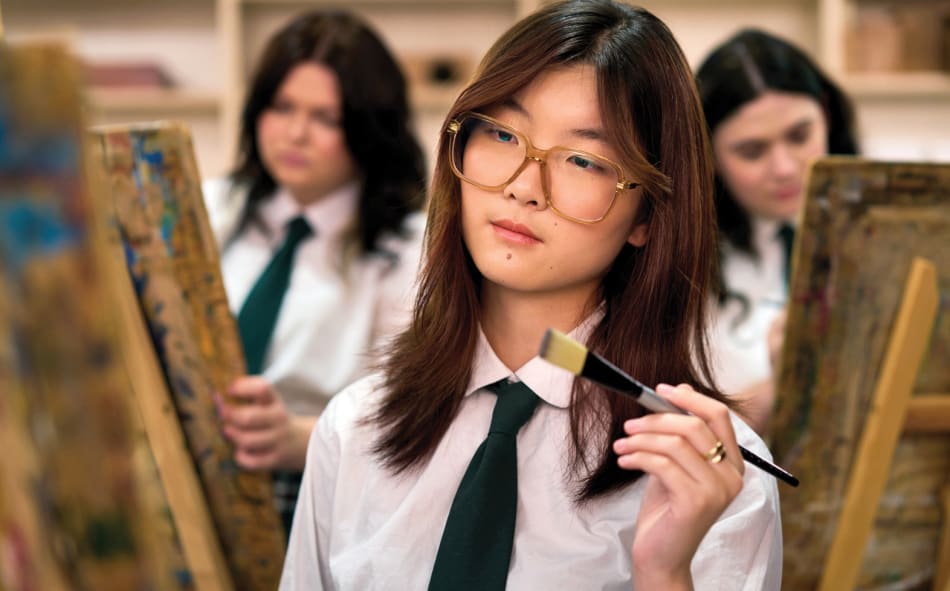
Athletics
Elmwood offers a wide range of athletics, especially given the size of the school and campus. In addition to its 16 Senior School and 19 Middle School competitive sports teams, it provides numerous recreational opportunities. This is a major benefit since it means that any student who wants to participate in a sport can. And, in fact, many do. Participation rates in sports for girls at Elmwood are much higher than average, and this is at a time when we’re seeing the opposite trend.
A highlight of the athletic program is rowing. The rowing program is led by former Olympian Derek O’Farrell. It’s offered to students in Grades 8 to 12, and it provides top-level instruction and training that includes both on and off the water training throughout the year and a training camp in Florida in the winter. Elmwood’s first-rate rowing program has produced impressive results, with many students continuing to row well after their time at the school. For instance, Abigail Butler, a 2019 graduate, was recruited by Fordham University’s rowing program, and, in the same year, two other students went on to row at post-secondary institutions.
“The priorities for me as a coach and an athletics director are participation and being part of a team,” says Erin Derbyshire, athletic director and instructional lead of health and physical education. “As much as we celebrate the athletic accomplishments of our many student athletes, we also want to encourage everyone to be active and explore what that means for them.” Working with this year’s student Sports Captain, the theme developed for the year was “Life is short, try a sport.” Athletes of the month are recognized in the weekly assemblies and newsletters, and the write-up that accompanies the honour speaks as much to the student’s commitment and support of other players as it does to their individual athletic accomplishments. And the end-of-year athletics assembly recognizes the most improved, most spirited, and most valuable players on more than 30 different teams that compete at various levels throughout the year. “We want to make it clear that there are many ways to contribute to a team,” Derbyshire explains.
Derbyshire is the paragon of what an athletic director should be. She’s passionate about helping each student find their place in sports but ultimately aims to ensure that physical activity becomes part of a lifetime pattern. She knows most of the students by name and checks in with them as she walks down the hall, through the gym, or across the field, her enthusiasm for sport and physical health easily extending to general wellness through a genuine interest in each student. “That sense of belonging and inclusion is key to students having the confidence to take a risk and putting themselves out there by joining a new team or trying a new sport,” she says. “As a faculty, we also model that behaviour. It’s important they see the adults in the school participating, trying new things, and supporting each other in sport and physical activity.”
Elmwood’s athletic program is distinguished by its passionate and committed coaches. While some have decades of playing and coaching experience, others are new to coaching. All, though, share an important mission: to provide opportunities for students to get physically active, to learn skills, to learn about leadership and teamwork, and to have fun. Derbyshire prioritizes getting as many staff involved in the athletic program as possible. For instance, Candice Butler, the school’s chef, offers a boat camp; the school’s science lab technician coaches cross-country running and track; and Meagan Enticknap-Smith, the deputy head of school, coaches cross-country running and swimming. In addition, many Senior School students help coach Middle School sports teams, which is a terrific leadership and mentoring opportunity.
Wellness
Frances Marchand, director of health, safety, and wellness, provides psychosocial counselling for the entire school, and has been in that role for more than two decades. Marchand notes that when Carol Kirby (then head of school) hired her, she was keen to develop support for mental health and that it be professionally provided. At the same time, Kirby hired an academic counsellor. Both were cutting edge for the time, and the roles have grown in the time since to a much broader understanding of student success and wellness.
Marchand is a quiet force within the school. She works closely with parents and has developed formal opportunities to meet with them when needed, but also gets in touch casually when things are going well. She hosts coffee mornings for parents with some regularity, with discussion topics ranging from physical fitness to internet safety. Whatever the topic is, the meetings serve to normalize and personalize a relationship between families and the school, particularly around wellness. The approach is very much to build community within the school, rather than waiting for a crisis and having that moment become the prime point of contact.
“One of the most vital things we can learn is, when things go wrong for us, we take a breath.”
The Student Success Centre at Elmwood is an integral part of the school’s commitment to wellness. One of the centre’s recent initiatives focuses on executive functioning skills. “This is a significant component of our support model as these skills are essential for optimal student success,” says Katie Fraser, director of the Student Success Centre. “Last year, our Middle and Senior School students participated in an executive functioning research project led by McGill University’s department of educational and counselling psychology.” This project helped students develop their awareness of and tools to improve their executive functioning skills. In addition to the individual support Student Success coaches provide, Katie also meets with students at the beginning of the year to have them set executive functioning growth goals. They then meet again later in the year to assess to what extent these goals have been met, and to generate a plan of action for how students will continue to work on their skills and make progress.
The students are known within the school environment, and staff and faculty rise to the responsibility of ensuring their safety in all areas, from academic counselling, to time management skills, to mental health. The approach to discipline is positive. “Kids will behave well if they can,” says Marchand, and she sees it as her role to give them that opportunity. “It’s about building those kinds of relationships”—ones that are caring, close, and based on mutual respect. She believes that modelling is key for all staff and faculty, but especially for her role as student counsellor. “The students have to see me in different capacities,” which includes coaching field hockey, attending intramurals, running the outdoor education program, and being present in the hallways. “Because then it’s safe; they see me as a real person. You know, I’m not just up here with my little bun and stern glasses. Because then they’d stop coming.”
“I enjoy listening to students, hearing their ideas, and brainstorming options,” says Alyson Bartlett, director of university counselling. “I find students will often come to their own conclusions by asking questions, talking through their ideas, engaging in self-directed research, and working through scenarios.” When students feel they have been heard and supported to make their own decisions, they feel empowered, excited, and driven to succeed.
“By asking simple questions, I have seen students move through a transformation from certainty, to uncertainty, back to certainty.” Bartlett rightly works from an understanding that the path toward post-secondary studies, as in life, isn’t necessarily linear—it’s more like fitting the pieces of a puzzle together. The conversation is less transactional—beginning in Grade 10 with a question about what the students want to do when they grow up—and more an investigation of what inspires and engages them.
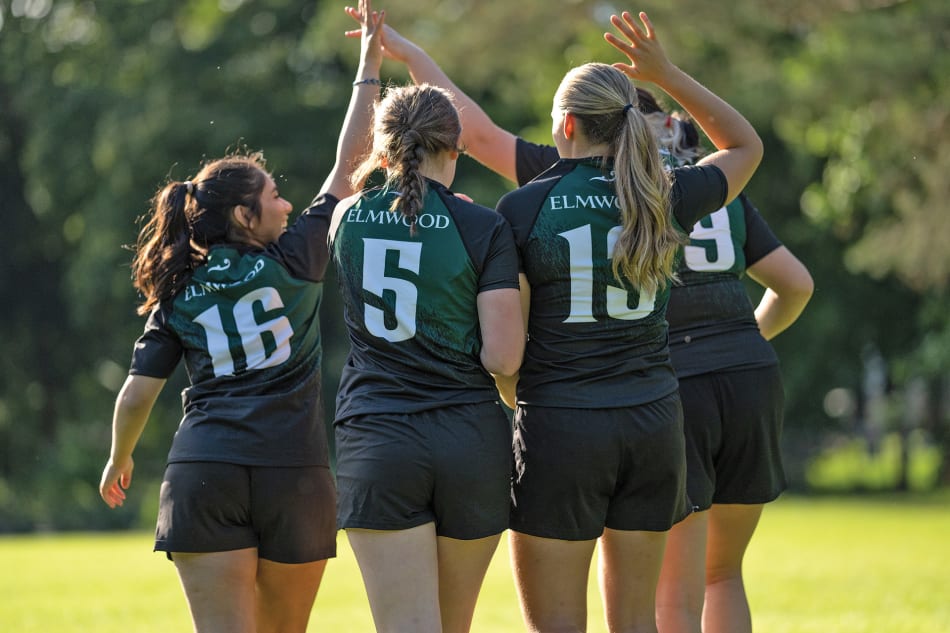
Getting in
Applications begin with completion of an online form and payment of a modest application fee. Requests for financial aid and scholarships are made at the same time, of which there is a fairly robust offering. More than $600,000 in merit- and needs-based scholarships are awarded annually. The financial aid program is supported in part through an annual gala, one of the best examples of its kind. They raise, frankly, a stunning amount each year.
While applications are fielded throughout the year, entry points to the program are set at intervals. Interviews and academic assessments are required at all levels, which is entirely typical for a school of this focus and stature. The interviews are detailed, but are less a test of an applicant than an opportunity to ensure that it’s the right relationship for all involved. Middle and Senior School students are required to take an entrance examination, held at various times throughout the year. Students and parents report that the admissions process was efficient, fair, and amiable.
Tuition is commensurate with schools of similar size and offering, if not slightly below average. There is a desire to ensure that all girls who can benefit from the school are able to attend, and the admissions team is disposed to work with families to ensure that the relationship is stable, sound, and can be maintained throughout a student’s time at the school. Diversity is seen as a strength within the student body, including financial diversity, and the financial aid program is the tool used to ensure it.
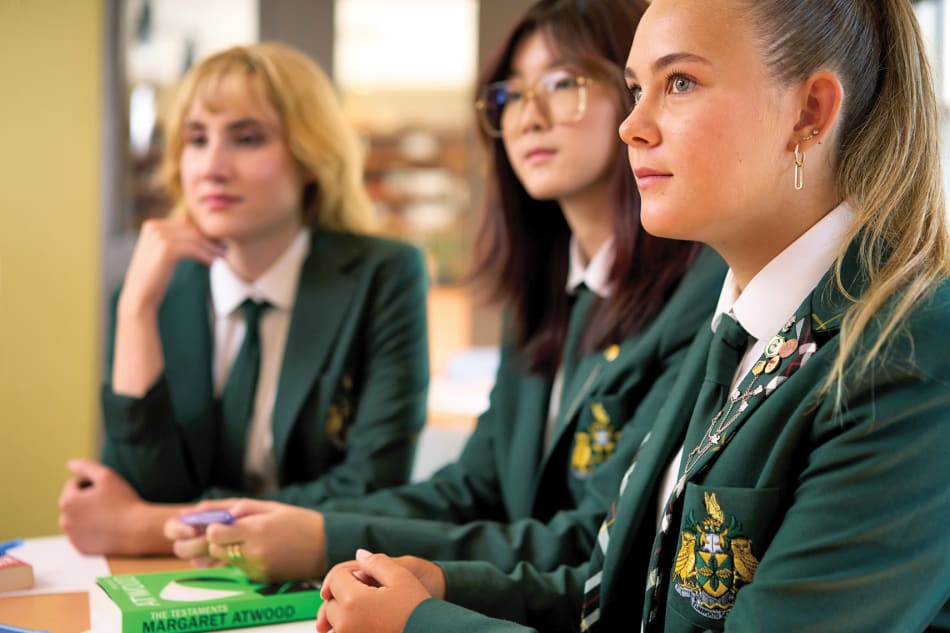
The takeaway
Elmwood has a long tradition of bringing students together in order to broaden their horizons, develop their voices, and build strong relationships. When asked what he hopes the students gain from the Elmwood experience, Whitehouse says, “I really want them to leave confident—that they are able to stand up in any room, in any situation, and be who they need to be to be successful and to hold their own in any situation.” That includes fulfilling their academic potential as well as experiencing the breadth of the Elmwood offering, be it acting in a play, participating in sports, entering an art show, making music, or contributing to the leadership of the school. “All those things that will open doors for them,” says Whitehouse. Elmwood teaches its students to understand themselves, their talents, and their sense of what they’re capable of. Its graduates have the capacity to take calculated risks and to bring themselves forward in all contexts.
Staff and faculty see their roles as guides, ensuring that every student has the support and the latitude to help them discover what their path is going to be. The size of the school is an aspect of that, providing a space in which each girl is known, something families and students are quick to point to as one of the things that they love most about the experience.
Values are an important part of the culture, something that rightly draws families. “It’s a gimmicky word these days,” says Whitehouse, “and everyone will say, you know, ‘it’s nice to be kind.’ But I think it’s one of the hardest things to do, to have people who genuinely look for the good in things.” Respect is a guiding principle, and the curriculum is developed with that in mind: respecting that you have to work hard and your time is valuable, but so is everyone else’s.
The students are high flyers, to be sure, and they’re not prone to hiding their lights under bushels. That said, the environment is one that is built around the knowledge that no one is good at everything, and not everyone is going to be head girl or the scholar with a 98% average. Success is seen as individuals working toward their strengths while having the capacity to see and appreciate the strengths and successes of others. Whitehouse tells the story of a student who struggled throughout their career at Elmwood—but when they received a subject award at graduation, they got a standing ovation. “And I don’t know how, say, the Grade 7s even knew about [that student], but there was this spontaneous, universal applause,” he recalls. “When they began at Elmwood, they were highly academic but struggled to know who they were. Through their time here, they gained a strong sense of self and left, top of the class, to attend Queen’s.” His goal is to continue that tradition of equal parts excellence, empathy, and support. “What Elmwood does is get them into a place where they can be who they are, where they can achieve their potential.” The school is very much centred on possibility, creating opportunities for students to explore their world and to find their place within it. The ideal student is looking for a vibrant, challenging, and community-oriented academic environment.





